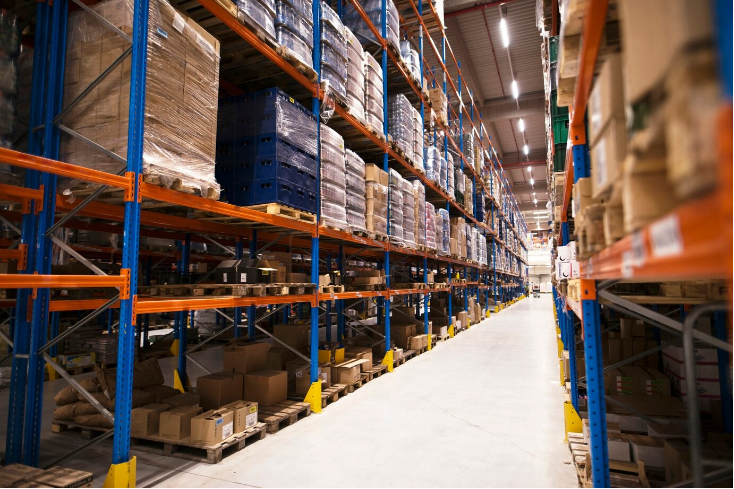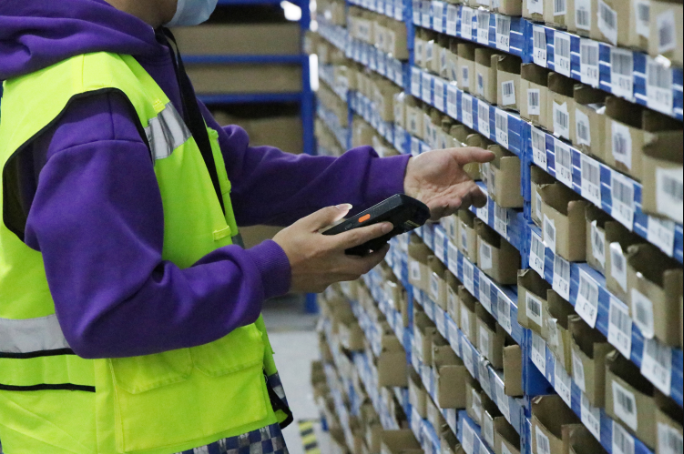In the dynamic world of eCommerce and logistics, supply chain disruptions are an unfortunate reality. One of the most significant disruptions that businesses face is a shortage at a fulfillment center. Whether it's a temporary issue or part of a more systemic problem, understanding how to react to a shortage at your fulfillment center is crucial for minimizing its impact.
In this article, we’ll explore what fulfillment center shortages are, their effects on your business, their causes, and, importantly, how to prevent and manage them effectively.
1. What Is the Shortage at a Fulfillment Center
A shortage at a
fulfillment center refers to a situation where the expected inventory is not available to meet
order fulfillment needs. It can occur due to a variety of reasons, such as
stockouts, delayed shipments, or mismanagement within the warehouse. When a fulfillment center faces a shortage, it cannot process orders efficiently, leading to delayed shipments, incorrect orders, and, ultimately, dissatisfied customers.
This type of shortage can stem from numerous factors, but most commonly, it’s related to
inventory management issues, inadequate staffing, or supplier delays. For businesses relying on
third-party logistics (3PL) services, a shortage at the fulfillment center can create a cascading effect that disrupts the entire supply chain.
2. Understanding the Impact of Shortage at a Fulfillment Center
The impact of a shortage at a fulfillment center can ripple through your entire operation, and if not handled quickly, it can damage your customer relationships, brand reputation, and bottom line. Below are the key consequences:
Order Delays and Backorders: The immediate impact of a shortage is delayed order fulfillment. This leads to
backorders and
shipping delays, frustrating customers who expect their products on time. If your business experiences these delays consistently, you risk losing customers to your competitors.
Stockouts and Revenue Loss: A shortage means that some items are unavailable for fulfillment. When these products cannot be shipped to customers, you lose out on revenue. In cases where high-demand products are out of stock, customers may turn to other brands or sellers, potentially causing long-term customer churn.
Increased Operational Costs: To address shortages, businesses may need to expedite shipments or air freight inventory, leading to higher shipping and handling costs. Additionally, increased customer service efforts to handle complaints add to the operational strain.
Negative Brand Perception: Inconsistent fulfillment performance can harm your brand’s reputation. Customers are less likely to trust a brand that frequently experiences stockouts or delayed deliveries, leading to negative reviews and a damaged brand image.
3. What Are the Effects of Fulfillment Center Shortage on Your Supply Chain
A shortage at your fulfillment center affects not just the warehouse but your entire supply chain. Here’s how:
Disrupted Demand Forecasting: A shortage disrupts accurate demand forecasting. When products are unavailable, your sales forecasts may become skewed, leading to poor future planning. Without proper inventory visibility, future orders may be affected, causing further delays in the fulfillment pipeline.
Supply Chain Bottlenecks: A shortage at a fulfillment center can cause bottlenecks upstream in the supply chain. If a product can't be shipped due to low inventory, suppliers may hold back future orders, disrupting the flow of goods from manufacturers to the warehouse.
Increased Complexity in Order Management: Managing backorders or split shipments becomes more complicated, requiring your team to constantly update customers on order statuses and managing multiple shipments for a single customer order.
Increased Risk of Further Shortages: If the root cause of the shortage isn’t addressed, it may create a domino effect. The cycle of stockouts, delays, and backorders can spiral out of control, with one shortage triggering further disruptions down the line.
4. What Causes Fulfillment Center Shortage
There are many reasons why a shortage might occur at a fulfillment center. Below are the most common causes:
Inventory Management Failures: Poorly managed stock levels, inaccurate forecasting, and lack of real-time inventory tracking often lead to shortages. These failures can be caused by a lack of automated inventory systems or the absence of effective replenishment protocols.
Supply Chain Delays: Late deliveries from suppliers or transportation delays often affect
inventory levels at the fulfillment center. Natural disasters, port strikes, or traffic congestion can all contribute to delays, affecting the entire chain of events from procurement to fulfillment.
Peak Season Demand: During peak seasons, such as holidays or major sales events, fulfillment centers experience a surge in orders. If inventory planning does not account for these spikes in demand, a shortage can quickly occur.
Warehouse Operational Inefficiencies: Inefficient warehouse operations—such as slow stocktaking, poor space management, or a lack of effective processes—can lead to a shortage. If stock isn't stored correctly or isn’t properly rotated, goods can be overlooked and become unavailable when needed.
Labor Shortages: Labor shortages, whether due to seasonal fluctuations or unforeseen events like strikes or pandemics, can lead to undercapacity in the fulfillment process, causing delays and stockouts.
5. How to Identify and Prevent a Shortage Early
Reacting to a shortage after it happens is costly and stressful. The true mark of excellence in supply-chain management is to spot risk early and take preventive measures so a shortage doesn’t cascade into a crisis. Below is a practical playbook of methods, signals, techniques, and cultural practices to help your team detect — and stop — shortages before they disrupt fulfillment.
Leading Indicators: Signals Before the Storm
To get ahead of a shortage, you must watch for weak signals, small deviations, or metric drifts. Some early warning signs include:
Declining inventory turns / downward trend in days-of-inventory-outstanding (DIO): If your inventory is being consumed faster than planned or your turnover is accelerating without replenishment catching up, that suggests you are creeping toward shortage territory.
Growing variance in lead times: If your supplier shipments that normally arrive in 7–10 days begin to drift to 12, 15, 18 days (or fluctuate more), your reorder models may become invalid.
Rising backorders or “soft holds”: If certain
SKUs repeatedly go on backorder (or customers are placed in waiting status), even briefly, that’s a red flag.
Frequent “emergency replenishment” orders: If your purchasing team or fulfillment center is repeatedly issuing rush orders or contacting suppliers late, this shows your baseline planning is failing.
Mismatch between inventory records and physical counts: Discrepancies discovered during cycle counts or audits (e.g. expected vs actual) often precede noticeable shortages downstream.
Alerts from predictive analytics or AI models: If you’ve adopted forecasting or anomaly-detection systems, they may flag items with accelerating demand or supply constraints before you see them in plain view. (AI & shortage forecasting are increasingly used to reduce risks in supply chains)
Supplier-side warnings / performance drift: If a supplier sends you notes about raw material scarcity, capacity constraints, factory maintenance, or shipping congestion, treat those as early alerts.
Bullwhip effect magnification: As upstream demand becomes more volatile, the ripple effects amplify. If your order variability upstream begins to spike, that could forecast future shortages.
To turn these signals into action, you need to embed a monitoring system, threshold alerts, and rapid-response protocols.
Tools & Systems: The Early Detection Engine
You will struggle to catch signals early unless you have the right instrumentation. Below are tools and system-level practices that are critical:
| Tool / System |
Purpose |
Key Features / Considerations |
| Real-time inventory tracking (WMS / ERP integration) |
Keeps your on-hand numbers up-to-date |
Integrate all sales channels, inbound receipts, returns, and internal movements so the WMS mirrors reality. |
| Demand forecasting + predictive analytics |
Projects future needs and identifies anomalies |
Utilize machine learning or statistical models that incorporate seasonality, promotions, external factors. |
| Automated reorder point (ROP) & safety stock calculations |
Ensures timely replenishment |
Use data-driven formulas for ROP and safety stock, adjusting dynamically for volatility. |
| Alerting & threshold systems |
Provides instantaneous warnings |
Set automatic alerts when stock of critical SKUs reaches preset thresholds or deviations exceed limits. |
| Cycle counting and perpetual audits |
Validates system vs physical (catch drift) |
Choose higher-frequency counts for fast-moving or high-value SKUs. |
| Scenario simulation tools / what-if modeling |
Tests supply chain robustness |
Simulate “what if supplier delay + demand spike” to see where shortages might emerge. |
| Supplier performance dashboards |
Monitors reliability and lead-time drift |
Track supplier on-time delivery, defect rates, variability, and share the metrics with them. |
| Cross-functional dashboards (S&OP / IBP) |
Aligns sales, operations, procurement |
Centralized dashboards bring transparency across teams to act early. |
Together, these tools form an early-warning network, not just a set of silos. Data alone won’t suffice unless the team can act on the signals.
Process & Policies: Preventive Discipline
Even the best technology will be undercut by weak processes or lack of discipline. Below are process best practices to institutionalize shortage prevention:
Safety Stock & Buffer Policies
Dynamic safety stocks: Rather than rigid fixed buffers, adjust safety stocks based on demand volatility, lead-time variability, and SKU importance (e.g. ABC classification).
Service-level targets by SKU: Determine acceptable fill rates per SKU (e.g. 95 %, 99 %) and set safety stock levels accordingly.
Tiered buffer layers: Maintain multiple buffer zones (e.g., operational buffer, strategic buffer, emergency buffer) to avoid exhausting all your slack at once.
Reorder point (ROP) recalibration: Continuously revisit ROP formulas, especially during periods of disruption or new demand patterns.
Cycle Counts, Inventory Audits & Reconciliation
High-frequency cycle counting: Fast-moving SKUs might be counted weekly; slower ones monthly or quarterly.
Root-cause investigations: Any discrepancy should trigger investigation (lost stock, misplacement, mis-scanning) and corrective action.
Reconciliation policies: If system counts vs physical counts drift beyond tolerance, freeze allocations until reconciled.
Periodic full physicals: At least annually or semi-annually, conduct full physical counts to reset baseline and uncover systemic drift.
Cross-Functional S&OP / IBP Alignment
Regular forecast review: Include sales, marketing, and demand signals (promotions, campaigns, new launches) in the forecast.
Collaborative planning: Ensure procurement, operations, and logistics see the same forecast and adjust inventory plans together.
Constraint awareness: If capacity, shipping lanes, or supplier constraints exist, highlight them early so trade-offs (which SKU to favor) can be made in advance.
Buffer allocation in constraint periods: In tight supply periods, allocate buffer stocks strategically (e.g. high-margin SKUs, loyal customers).
Governance discipline: Hold forecast‐variance review meetings, track forecast error metrics, and penalize persistent inaccuracy.
Supplier Contracts, SLAs & Relationships
Incorporate lead-time guarantees / SLAs: If supplier commits to X-day deliveries, build penalties or bonuses to align incentives.
Buffer capacity clauses: Negotiate optional capacity for rush orders or safety volumes to absorb shocks.
Tiered sourcing / dual sourcing: Always have backup suppliers for critical SKUs to hedge against single-supplier failure.
Shared visibility / transparency: Share demand forecasts and inventory levels with suppliers so they can proactively plan.
Regular supplier performance reviews: If supplier lead times drift or defect rates rise, review and renegotiate.
Scenario Planning & Contingency Protocols
“What if” scenarios: Monthly or quarterly run simulations: e.g. supplier outage, port delay, demand surge, labor shortage.
Predefined escalation paths: If certain thresholds are crossed (e.g. stock < 20 % of buffer), trigger emergency processes (notify procurement, open backup sourcing, restrict new orders).
Alternate sourcing playbooks: Maintain a vetted list of alternative suppliers or manufacturers that can be called upon quickly.
Rapid replenishment options: Pre-arrange terms or contracts for air freight, partial LCL (less-than-container-load) shipments, or courier bridging if standard supply fails.
Continuous Improvement: Learning from Near-Misses
Preventing shortages is never a one-time project; it’s a continuous loop:
Post-mortem / “after action” reviews: Whenever you come close to a shortage or experience one, run a root-cause analysis.
Update models & thresholds: Use learnings to adjust forecasting models, buffer thresholds, supplier SLAs, etc.
Re-train staff: Incorporate lessons into training so warehouse, procurement, and operations teams stay alert.
Stress-test your system: Periodically test with surprise simulations or “chaos engineering” (e.g. pretend supplier outage) to see if the system holds.
Monitor key metrics persistently: Track metrics such as forecast error, supplier on-time rate, buffer utilization, order fill rates, and stock variance trends.
6. What Role Does SFC Play in Managing Fulfillment Shortage
As a trusted third-party logistics provider,
SendFromChina (SFC) plays a pivotal role in managing and mitigating fulfillment shortages. SFC’s expertise in international logistics ensures that businesses can seamlessly navigate the complexities of global supply chains. Here's how SFC can assist:
Efficient Warehouse Management: SFC’s
warehouse management system (WMS) ensures real-time tracking of inventory and automated replenishment alerts, preventing stockouts.
Flexible Supply Chain Solutions: With extensive experience in global shipping and fulfillment, SFC can quickly adapt to supply chain disruptions, offering solutions like air freight or expedited shipping to mitigate the effects of shortages.
Scalable Logistics Support: SFC can scale fulfillment capabilities to meet increased demand, particularly during peak seasons, ensuring that your supply chain remains agile and responsive.
Visibility and Transparency: With SFC, businesses gain end-to-end visibility into their inventory and order management processes, enabling them to proactively address potential shortages before they escalate.
7. Conclusion
Dealing with a shortage at a fulfillment center can be a challenging experience for any business, but with the right systems and proactive measures in place, you can minimize the disruption it causes. Understanding the causes, monitoring your inventory, collaborating with your suppliers, and leveraging the expertise of a 3PL provider like SendFromChina are essential steps to ensure your business can continue to meet customer expectations even in times of scarcity.
8. FAQs
1. How can I prevent a shortage at my fulfillment center?
To prevent a shortage, ensure you have accurate inventory tracking, regular audits, demand forecasting, and strong supplier relationships.
2. What should I do if I experience a shortage at my fulfillment center?
Immediately assess the cause, communicate with your customers about potential delays, and implement contingency plans like expedited shipping to resolve the issue.
3. Can a shortage at a fulfillment center affect my customer satisfaction?
Yes, shortages lead to delayed shipments, which negatively impact customer satisfaction. Maintaining proper stock levels and communicating transparently can help reduce this impact.
4. How do third-party logistics providers help with shortages?
3PL providers like SendFromChina help with inventory management, ensuring timely stock replenishment and offering flexible solutions to avoid or address shortages.
5. What is buffer stock and how does it help avoid shortages?
Buffer stock is extra inventory kept on hand to absorb demand fluctuations. It helps prevent stockouts during unexpected surges in demand or supply chain disruptions.






 Post Views:449
Post Views:449
 Want to know about our services, fees or receive a custom quote?
Want to know about our services, fees or receive a custom quote? Please fill out the form on the right and we will get back to you within a business day.
Please fill out the form on the right and we will get back to you within a business day.
 The more information you provide, the better our initial response
will be.
The more information you provide, the better our initial response
will be.




 TAGS:
TAGS: